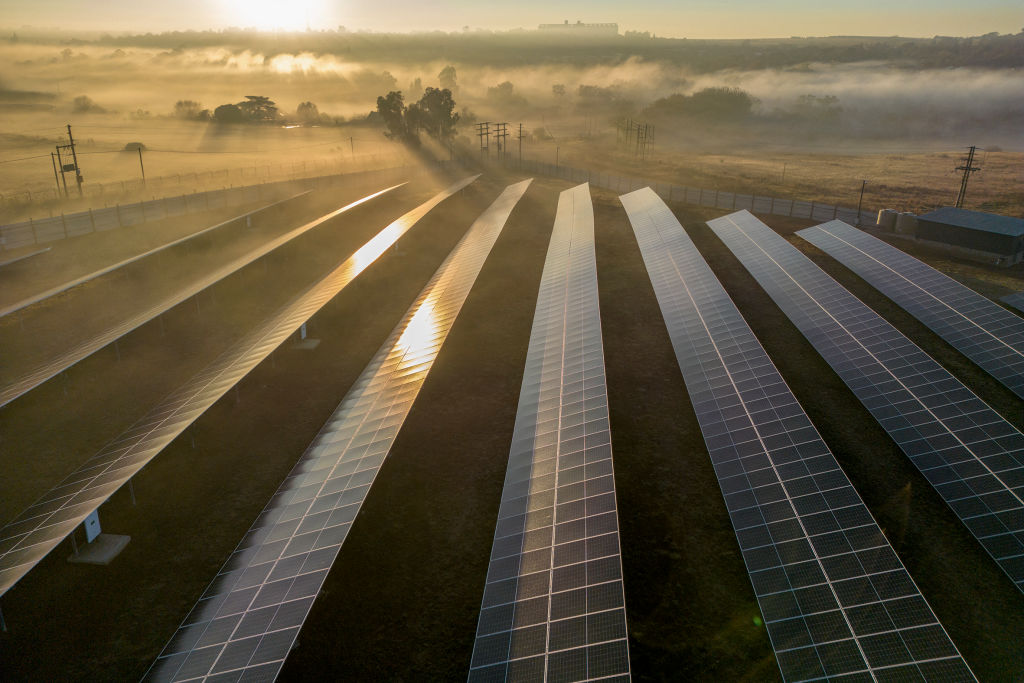
Earlier this year, the International Energy Agency (IEA) announced that the world had reached a new tipping point, with more than half of global energy investments going into clean and renewable technologies. But that spark of good news in an otherwise grim year for the climate seems to have largely sidestepped Africa. The continent received only 2% of global green energy investments in 2023, despite Africa being home to one-fifth of humanity. That has to change, not only for the needs of the world’s fastest growing population—by 2100 Nigeria’s population alone is projected to surpass China’s—but in order to help the planet reach its targets for reducing carbon emissions.
This week Kenya hosted the first-ever Africa Climate Summit, bringing together governments, the private sector, technical experts, policymakers, and civil society to make sure that green energy investment is a priority when it comes to powering the future. “Urgent action is needed to dramatically increase clean energy investment in Africa, which has fallen short despite the immense opportunities,” said President William Ruto of Kenya on the eve of the summit.
Nearly half of Africa’s population has no access to electricity. That lack of legacy fossil fuel infrastructure, however, can be a boon, enabling the continent to leapfrog into greener technologies without being bogged down by old tech, much in the same way it did with mobile phones. But if Africa’s growing nations can’t access the investment they need to develop green energy quickly, they will take whatever else they can get. And fossil fuel companies are only too happy to step in, laying the groundwork for continued fossil fuel dependence for decades to come.
In 2022 multinational investments into fossil fuel exploration in Africa topped $5.1 billion, setting the stage for greater investment in gas, oil, and coal extraction down the line. Investment into full green energy development projects barely doubled that amount. The siren song of an economic boost from fossil fuels, combined with the potential of quick power generation for an energy-demanding populace, will be difficult for many leaders to ignore. “Africa stands on the cusp of sweeping economic development. Whether this development is powered by clean renewables, or dirty fossil fuels, will go a long way to determining if the world meets the Paris Agreement goal of limiting global heating to 1.5°C,” says Mohamed Adow, director of the energy and climate think-tank Power Shift Africa.
There are many barriers to clean-energy investment in the region, from the high cost of borrowing for countries already burdened with debt, to a perception that African investments are particularly risky. Unlike traditional fossil fuel powered energy plants that rely on massive distribution grids, renewable projects are often smaller, localized, and serve consumers with limited ability to pay. This makes them more nimble, responsive, and faster to construct, but it also means more projects that require management and monitoring, which can drive up costs. According to a new IEA report, Financing Clean Energy in Africa, released Sept. 6, the cost of capital for utility-scale clean energy projects on the continent is at least two to three times higher than in advanced economies. “The African continent has huge clean energy potential, including a massive amount of high-quality renewable resources. But the difficult backdrop for financing means many transformative projects can’t get off the ground,” said IEA executive director Fatih Birol as he presided over the report’s launch.
The IEA estimates that Africa needs approximately $25 billion in energy investments a year through 2030 in order to provide power for most of the population. Even though that’s double the current annual expenditure, it is still just 1% of annual global energy investment. Twenty-five billion dollars would cover the cost of one large liquefied natural gas terminal a year, notes the IEA. Or it could fund 45,000 solar-powered micro grids, according to calculations by the World Bank, enough to provide green electricity for more than 100 million people. In terms of bang for the energy buck, investing in renewables makes a lot more sense. Now it’s up to financial institutions to see the light and start making those investments easier.
A version of this story also appears in the Climate is Everything newsletter. To sign up, click here.
More Must-Reads From TIME
- The 100 Most Influential People of 2024
- Coco Gauff Is Playing for Herself Now
- Scenes From Pro-Palestinian Encampments Across U.S. Universities
- 6 Compliments That Land Every Time
- If You're Dating Right Now , You're Brave: Column
- The AI That Could Heal a Divided Internet
- Fallout Is a Brilliant Model for the Future of Video Game Adaptations
- Want Weekly Recs on What to Watch, Read, and More? Sign Up for Worth Your Time
Contact us at letters@time.com